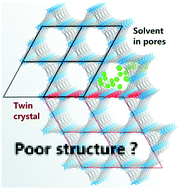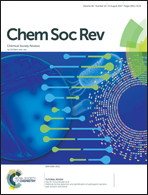Pitfalls in metal–organic framework crystallography: towards more accurate crystal structures†
Abstract
Single crystal X-ray diffraction (SC-XRD) is the principal method for determining the crystal structures of metal–organic frameworks (MOFs). This tutorial deals with the handling of MOF crystals and analysis of crystallographic data obtained from single-crystal X-ray diffraction, focusing on two features that are particularly important in MOF crystallography and have a large impact on the quality and reliability of the final crystal structures: (1) the treatment of pore-occupying entities (both in the physical crystals and in the crystallographic model) and (2) crystallographic twinning. Proper handling of samples and data will reduce the need for using solvent masking software (e.g. SQUEEZE) to obtain acceptable crystal structures. If SC-XRD is to retain its position as the definitive method of MOF structure determination, these issues must be addressed when a new MOF structure is determined and reported. The issues addressed in this review is also valid for other porous, crystalline solids such as porous organic cages, metal–organic polyhedra, covalent organic frameworks and zeotype materials.



 Please wait while we load your content...
Please wait while we load your content...